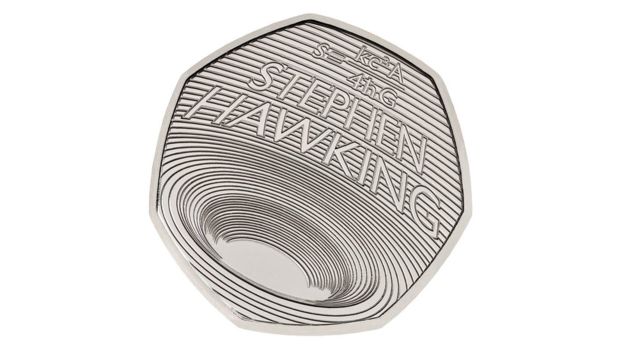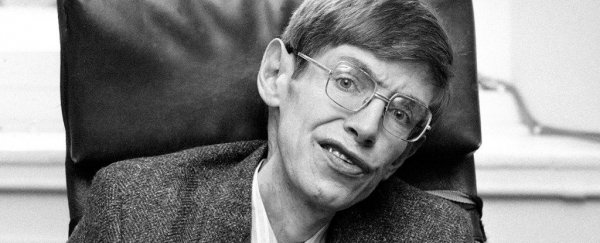It's been a year since the renowned and profoundly influential physicist Stephen Hawking passed away, and the Royal Mint has honoured his legacy in the form of a new commemorative 50 pence coin.
If you've ever been concerned that British currency doesn't feature enough astrophysical equations, we have good news. Although the collector's item, sold on the Royal Mint website, won't be released into circulation, the stunning coin displays the formula describing a black hole's entropy.
Rather than featuring a portrait of the scientist himself, the designer went for something far more abstract, and yet something Stephen Hawking, who had a great sense of humour, would hopefully have approved of.
"I wanted to fit a big black hole on the tiny coin and wish he was still here chortling at the thought," engraver Edwina Ellis told the BBC.
 (Royal Mint)
(Royal Mint)
Amid swirling lines angled to inspire thoughts of space curving around an event horizon is Hawking's name below the formula S = kc^3 A / 4ℏG.
Not only is it just the thing to remind you of one of the greatest minds in modern science, it's handy just in case you forget how to calculate the thermodynamic entropy of a Schwarzschild black hole of a given mass.
Known as the Bekenstein-Hawking formula – an honour shared with the theoretical physicist Jacob Bekenstein – its derivation was a significant step forward in efforts to make the weird properties of black holes fit with existing laws on energy.
In simple terms, it links the amount of disorder contained by a black hole with a physical feature of the hole itself: its area. Taken further, it means adding material to a black hole makes its surface expand.
This also implies a way to make black holes less black through the emission of a weird kind of radiation, a finding that Hawking proudly counted as one of his landmark contributions to science.
Even if you don't find yourself needing the Bekenstein-Hawking formula while buying your morning coffee (although we suggest not spending a collector's item to do that), the coin is a beautiful reminder of a man who not only advanced physics, but helped make many mind-blowing aspects of the Universe accessible to the non-expert.
The design certainly has his daughter Lucy's approval.
"It is a great privilege to be featured on a coin and I hope my father would be pleased to be alongside Sir Isaac Newton and Charles Darwin as scientists who have made it on to money," Lucy told the BBC.
